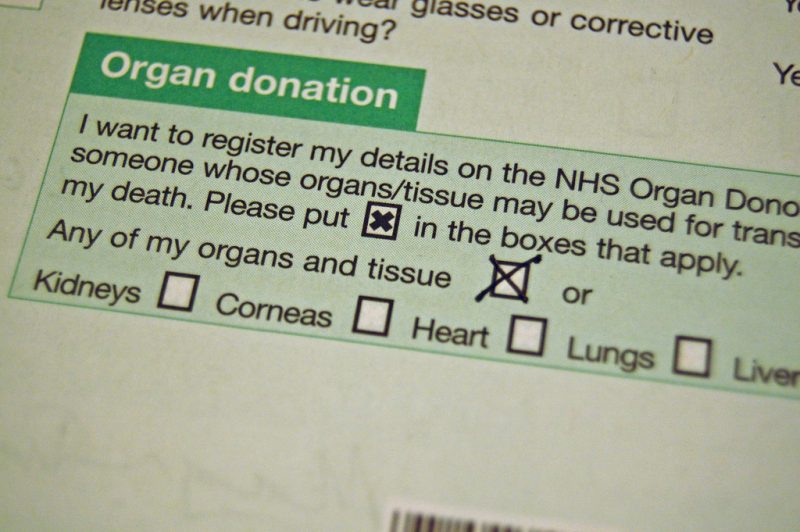
Transplantation is in some regards the “end of the line” therapy in medical care as transplantation specialists step in to replace entire organs after other interventions to preserve or restore function have failed. In lung transplantation, donor organs give patients with end-stage lung disease the capacity to breathe better, increase levels of physical activity and reclaim their independence. When successful, lung transplantation is life-changing in more ways than one can imagine.
Unfortunately, donor organs remain a scarce resource as there are fewer available organs than people in need. This is likely to remain the case for the foreseeable future even as scientists and medical professionals continue to explore strategies to increase the supply of available organs. The range of innovation includes everything from machine-based restoration unusable organs, to expansion of the types of clinical scenarios considered to be acceptable for organ donation. At the cutting edge of transplantation science, researchers are working toward breakthroughs in tissue bioengineering that will allow for the creation of entire organs in the lab. The possibilities for the future are endless and exciting.
While we wait for this science to mature, transplant professionals are faced with the difficult task of deciding which of the many potential recipients should be prioritized for transplantation. In lung transplantation, the lung allocation score – implemented in the United States in 2005 – provides a numeric measure that tells providers which patients will benefit the most from receiving new lungs, while simultaneously minimizing the rate of death amongst those who are waiting for transplantation. Several patient factors are incorporated in the lung allocation score (Age, body mass index, New York Heart Association (NYHA) classification, underlying lung disease and markers of renal function), to create a comprehensive assessment of suitability for transplantation 1.
In addition to the lung allocation score, several other factors are taken into consideration when deciding which patients will derive the most benefit from receiving a donor lung. One important consideration relates to the patient’s functional reserve and associated likelihood of tolerating the stresses of the lung transplant surgery and the post-operative recovery. Existing research highlights that patients with lower functional status prior to lung transplantation do not do as well after surgery, experiencing longer hospital stays and higher rates of mortality 1 year after transplantation2–4. However, there has been little to no investigation on the longevity of the relationship between preoperative functional status and survival.
A recently published article in the Annals of Thoracic Surgery addresses this issue through the exploration of perioperative reserve as a predictor of long-term outcomes following lung transplantation
Using data acquired from the Scientific Registry of Transplant Recipients (SRTR) database, rigorous survival analyses and regression models were employed to determine whether better functional status before transplantation is independently associated with improved survival several years afterward. Between the years of 2005 and 2015, over 16,000 patients More than a third of these patients were disabled at the time of transplantation, requiring assistance for completion of activities of daily living. In contrast, only 9.6% of patients were truly independent prior to their transplant operation. Survival analyses accounting for potential contributing factors demonstrated a statistically significant, independent relationship between disability at the time of transplantation and long-term mortality.
Many lung transplantation candidates are debilitated because of their underlying lung disease which makes the application of study findings rather delicate. However, study findings highlight the potential benefit of rehabilitation programs for lung transplantation candidates. Improving preoperative functional status may better prepare candidates for the onslaught of lung transplantation surgery and post-operative recovery.” In doing so, we can continue to improve our stewardship of the scarce resource of donor organs.
These findings are described in the article entitled, “Is Functional Independence Associated With Improved Long-Term Survival After Lung Transplantation?,” recently published in the Annals of Thoracic Surgery. This work was conducted by investigators from Harvard Medical School, Boston, MA and Duke University School of Medicine, Durham, NC.
References:
- Eberlein M, Garrity ER, Orens JB. Lung Allocation in the United States. Clin Chest Med. 2011;32(2):213-222. doi:10.1016/J.CCM.2011.02.004
- Castleberry AW, Englum BR, Snyder LD, et al. The utility of preoperative six-minute-walk distance in lung transplantation. Am J Respir Crit Care Med. 2015;192(7):843-852. doi:10.1164/rccm.201409-1698OC
- Hook J, Lederer DJ. Selecting Lung Transplant Candidates: Where do current guidelines fall short? Expert Rev Respir Med. 2012;6(1):51-61. doi:10.1586/ers.11.83.Selecting
- Singer JP, Diamond JM, Gries CJ, et al. Frailty Phenotypes, Disability, and Outcomes in Adult Candidates for Lung Transplantation. Am J Respir Crit Care Med. 2015;192(11):1325-1334. doi:10.1164/rccm.201506-1150OC









